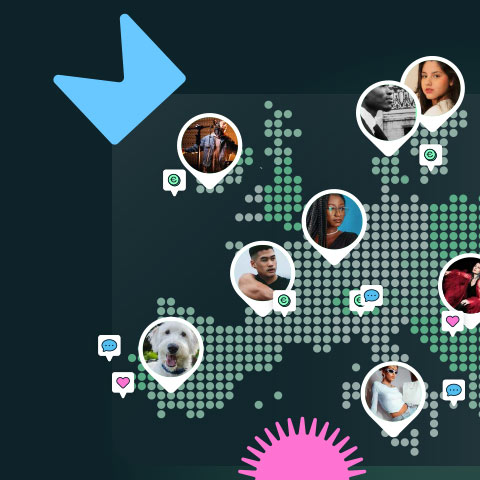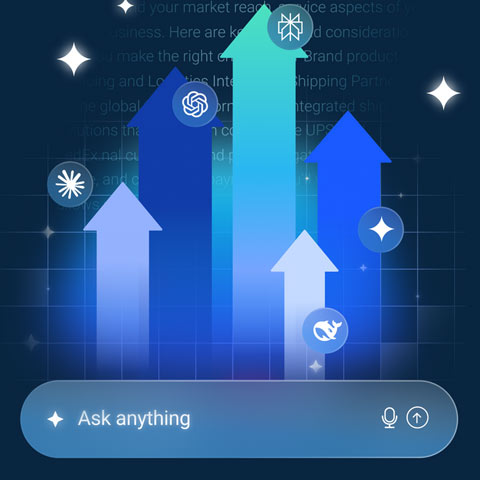The Benefits of Customer Data Integration Explained


Customer data integration - CDI - is a process that consolidates and manages data about your customers taken from multiple sources. It helps you drive sales and revenue by identifying customer preferences and behavior, demographics, and pain points, so you can target your marketing and improve the overall customer experience.
If you’re dealing with poor data quality, it’ll increase your workload, damage the customer experience, and lead to data breaches. Easily solved if you have a strong data governance strategy. If you keep your data clean, consistent, and secured.

62% of enterprises rely on data that’s up to 40% inaccurate.
Customer data integration is an essential part of your data governance strategy. Without it, finding and analyzing your data will be a painstaking process. Trying to access several sources to find the most recent data, cleaning it, and then uploading to a single report. Only then will you be able to analyze it.
Customer data integration - CDI - will help your business be customer-centric, offering the best customer experience by giving you a precise view of your relationship with each customer. From a single data hub, you'll be able to manage customer privacy, buying behavior, preferences and demands, and pain points.
CDI will increase productivity and streamline business processes such as billing, delivery, returns, and more, by giving you a single source of truth. This will stop data from different sources being duplicated or out of data.
This post is going to explain how customer data integration is the process that'll help your business make data-driven decisions to improve the customer experience and increase your bottom line.
What is customer data integration?
Customer data integration - CDI - is the collection and analysis of data from every customer touch point. This customer data can then be stored in a single place so that you have a 360° view of your customers. This includes their buying preferences, location, interests, job role, and more.
Sources where data can be collected include…
- Contact details
- Financial data
- Market research data
- Social media
- Surveys
This holistic view of your customers is beneficial to multiple teams in your organization - marketing, sales, customer support, PR - as they’ll be able to target their strategies towards the most profitable areas, and address issues that could cause customer churn.
Why is customer data integration important?
Customer data integration is an essential part of customer relationship management - CRM - and gives all the teams in your organization access to up-to-date customer insights.
With this information, your business will be able to…
Reduce customer churn and increase loyalty. Create personalized messaging with data collected from customer touch points, whether it’s coming from your account managers or customer support, to better target customers and speak their language.
Create a better customer experience. Understanding how customers have journeyed towards buying your product means helps you create targeted marketing and sales messaging, that’ll encourage upselling to existing customers and conversions from prospects.
Benefits of customer data integration
I’m not going to force customer data integration on you, it’s entirely your choice. And, you may already have a process in place whereby you use several different systems to create several different reports. You tidy up the data - remove duplicates, etc. - and, after several time consuming hours, put it all into a single report.
Bit of a pain, no?
But… if you were to consider customer data integration, you’d be able to eliminate all those hours and get on with analyzing your data and gathering information about your customers.
CDI will help teams throughout your organization…
- Product - collecting customer feedback will help you develop products that customers want
- Sales - increase lead conversion by concentrating consumers that are highly likely to buy your product
- Marketing - talking your customers’ language and create content that targets relevant audience segments
The important stuff.
Talkwalker simulated consumer intelligence dashboard - collect consumer insights from multiple data sources - customer surveys, customer support, social media, reviews - to find their customer feedback.
Okay, let’s look at the benefits of customer data integration in detail…
Find new opportunities
Analyzing the customer information you’ve collected will give you a clear picture of what they want, so when you’re about to launch a new product or introduce a new feature to an existing one, you’ll hit your target.
Target the right audience
Your CDI strategy will provide data about customer preferences - their wants and needs - and their buying patterns. This information will ensure that your marketing and sales communication is relevant to your target audience.
Increase customer loyalty
With all this customer data at hand, you’ll be able to create a more personalized customer experience. Whether it’s your marketing communication or customer service.
Drive precise business decisions
Data cleansing and validation - deleting duplicates, out of date data - will help you make accurate data-driven business strategy decisions.
Identify industry trends
You don’t have to guess what’s coming. To stay ahead of industry trends, use CDI to look at historical and current customer data so you can find patterns in demand and be ahead of the game.
Break down data silos
If your organization is struggling under a pile of data silos, you’re going to miss vital consumer insights. Does your sales team have customer data that your customer support team doesn’t know about? Is marketing collecting insights but failing to share with sales? Are sales and marketing collecting the same customer data, but storing it in two separate silos?
ARM and Treasure Data survey, 2019 - 47% said that data was siloed and difficult to access.
So much time wasted. So much room for error.
A comprehensive customer data integration strategy will collate all your company’s data into a single customer view - SCV, that’ll be part of your single source of truth - SSOT. This is your company’s information architecture that ensures that all the teams in your organization refer to the same data when making business decisions.
Say goodbye to data silos!
For example… you’ve a customer complaining to your support team because your finance department overcharged them. Maybe, just maybe, now’s not the time to send them a promo email. If your organization's data was all stored in one place, the scheduled marketing emails to this angry customer could have been paused.
Left hand. Right hand.
- Having a single source of truth - SSOT - i.e., one data silo, means you can police who has access, ensuring the safeguarding of your data.
Storing all your customer data in one place also helps with regard to data protection - GDPR - if you need to delete or update customer data. Such a pain having to log into multiple platforms.
- A CDI strategy will keep your data unique, as you’ll avoid multiple teams collecting the same data. You’ll be confident that the available customer data is unique and current, and be able to see areas where you’re missing data.
- Without data integration you can’t guarantee data accuracy. There’s a good chance that you’re having to check several data collection tools, or you’re overwhelmed with various spreadsheets full of crucial data. Not the ideal situation if data quality is important to you.
When you collect data, using multiple tools with different collection methods, will lead to inevitable inaccuracies. Spreadsheets can be fun - NOT - but update one, update all, otherwise your data will be corrupted.
Talkwalker Quick Search shows common themes relating to data silos.
What is a single customer view?
I mentioned the importance of having a single customer view, but neglected to explain what I meant. Here goes…
If you have a customer data integration strategy and consolidate all your data into a single source of truth - SSOT - you’ll eliminate data silos and avoid your teams using conflicting or inaccurate data. Which can result in expensive and reputation damaging mistakes. Your SSOT should include data from across your organization - marketing, sales, HR, legal, product, finance, etc.
Single customer view is part of this database, and holds the data you’ve collected from all your customers. Without an SCV, the customer data that your business collects - call center transcripts, customer service tickets, surveys, online forms, face to face chats, demographics, sentiment analysis, social media - won’t be managed or maintained. It won’t be fit for purpose.
Talkwalker's consumer intelligence platform - demographics of Coca-Cola customers.
Not having a single customer view and real-time customer insights means you’ll find it hard to create the kind of customer experience that we all demand.
Talkwalker sentiment analysis will show you how consumers feel about your brand.
To ensure your CX is top notch, here’s a post that shares the 19 customer experience metrics to measure.
Challenges integrating customer data
No one said collecting customer data was easy. But it is essential, if you want to be able to make data-driven decisions and continue to grow your business and increase your bottom line.
Building your CDI strategy
First hurdle is managing customer data that’s collected from multiple sources, because it’ll be in various forms. An integration platform with built-in connectors for different sources will streamline this process.
Managing data volume
Imagine you have ten customers, how much data that involves, which can be added to regularly. Now imagine 1000 customers, 5000, you’re a global brand.
Your customer data must remain relevant and accessible, but it’s a big ask. To be able to store your ever-increasing customer data, you’ll need storage space that can grow with your business.
Protecting customer data
This is a biggie.
Consumers, quite rightly, feel strongly about their privacy. Protecting their data, safeguarding against data breaches, and recovering lost data is an essential part of customer data integration.
A single data breach can bring a business to its knees. Destroying customer loyalty and trust, and potentially causing irreparable damage to its reputation. Protect your customers’ data with a robust data security plan.
What is data validation?
With customer data changing on a daily basis - updates, corrections, modifications, deletions - validating your data is important. If you want your reporting, analysis, and insights to be beneficial, you need to be able to trust your data.
Making business decisions based on inaccurate data, could lead you to lose business, customers, and your brand reputation.
Data validation - data cleansing - is a process that checks data quality, before it’s processed. It’s looking for data that’s…
- Complete - no missing or unknown value
- Unique - no duplicates
- Compliant - follows established specifications
5 types of consumer data integration
Your goal is to combine and understand all your data, and grant access to your organization so you’re all singing from the same song sheet.
Before you jump into integrating data, you need to choose the best type of data integration for your business….
1. Data consolidation
Data consolidation uses extract, transform, and load - ETL - technology to collect data from several sources. It’s then cleaned and translated into a readable format, and stored in a single data store or data warehouse. The aim is to reduce the number of data storage locations.
2. Data propagation
Data propagation duplicates your data. It remains in its original location, but you’ll create a copy. This method is the recommended choice when you only use a couple of tools - data sources - that need to share data. For instance, you use Marketo for your automated email campaigns and your sales team use Salesforce, with both platforms needing access to the same customer data.
3. Data virtualization
This integration method uses an interface to provide unique, near real-time data from different sources with various data models. Your data can be viewed in a single location, but it’s not stored there.
4. Data federation
Data federation is a form of data virtualization that collects data from multiple sources and makes it available to view from a single point. Similar to data consolidation, but it doesn’t combine the data. Data consolidation provides advanced security features and compliance which can make it an expensive choice. If this is an issue, data virtualization and data federation are the recommended solutions.
5. Data warehousing
Data warehousing includes reformatting, data cleansing, and data storage.
Which type of customer data integration to choose?
For the most part, you should choose data consolidation. It’s a simple way to regulate your data and break down data silos. It’s price dictates that it’s recommended for enterprise businesses who tend to have massive amounts of data.
Data propagation is ideal for smaller businesses with less customer data.
Data federation and data visualization can be used if your budget won’t cover data consolidation.
How to set up customer data integration
To avoid any stumbling blocks when creating your customer data integration strategy, here’s four best practices...
Choose your data sources
These are the various places where you’ll collect your customer data - social media, surveys, call center transcripts, emails, interviews, etc. You’ll need to choose a data extraction tool that can translate collected raw data into actionable insights.
- Extract data from multiple formats - structure and unstructured
- Data cleansing - to flag variations in data quality
- Real-time data extraction - to ensure you’re only referring to current data
- Export function - to be able to access data in - BI tools, SQL Server, PostgreSQL, etc.
Assign access rights
Who are you going to let access your previous customer data? Who’s in charge of integrating your customer data?
Choose wisely. They’ll be responsible for protecting your data and maintaining its quality.
Define your integration goals
Draw up your company’s reasons for integrating customer data, and choose relevant metrics to measure and prove whether you’re meeting your objectives.
Create a plan and schedule
You’ll need to establish rules to protect your data and to preserve its quality. Your data extraction tools will help you determine the timeline.
Collect consumer intelligence
Now you’ve got the basics of customer data integration, it’s time to source your customer data.
Talkwalker’s consumer intelligence platform gives you a 360° view of your customers. It’ll help you find and analyze data from multiple sources, then consolidate into actionable insights. Sign up for a free demo and get to know your customers.
Want more like this?
Want more like this?
Insight delivered to your inbox
Keep up to date with our free email. Hand picked whitepapers and posts from our blog, as well as exclusive videos and webinar invitations keep our Users one step ahead.
By clicking 'SIGN UP', you agree to our Terms of Use and Privacy Policy


By clicking 'SIGN UP', you agree to our Terms of Use and Privacy Policy
Other content you may be interested in
Categories
Categories

Want more like this?


Want more like this?
Insight delivered to your inbox
Keep up to date with our free email. Hand picked whitepapers and posts from our blog, as well as exclusive videos and webinar invitations keep our Users one step ahead.
By clicking 'SIGN UP', you agree to our Terms of Use and Privacy Policy














